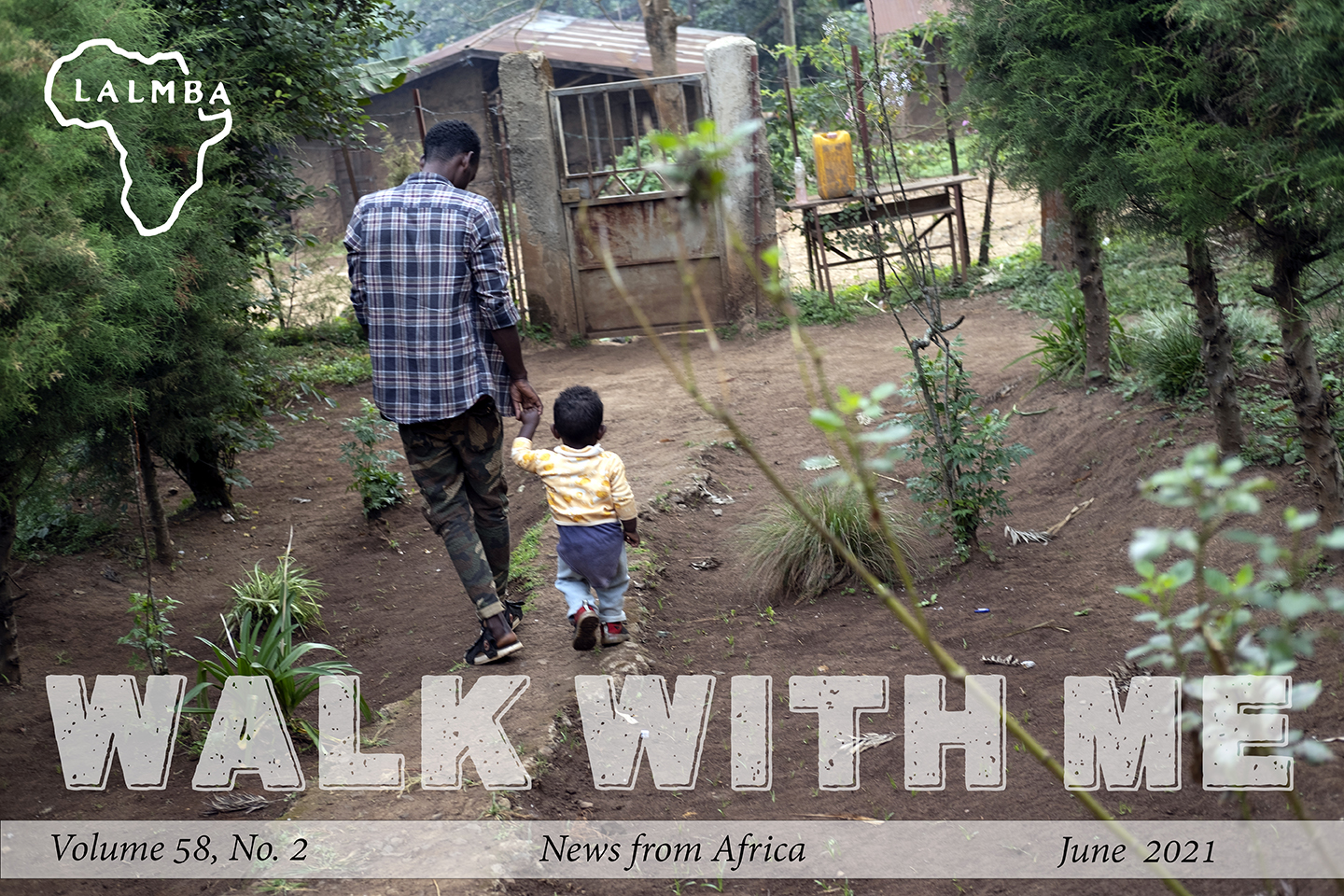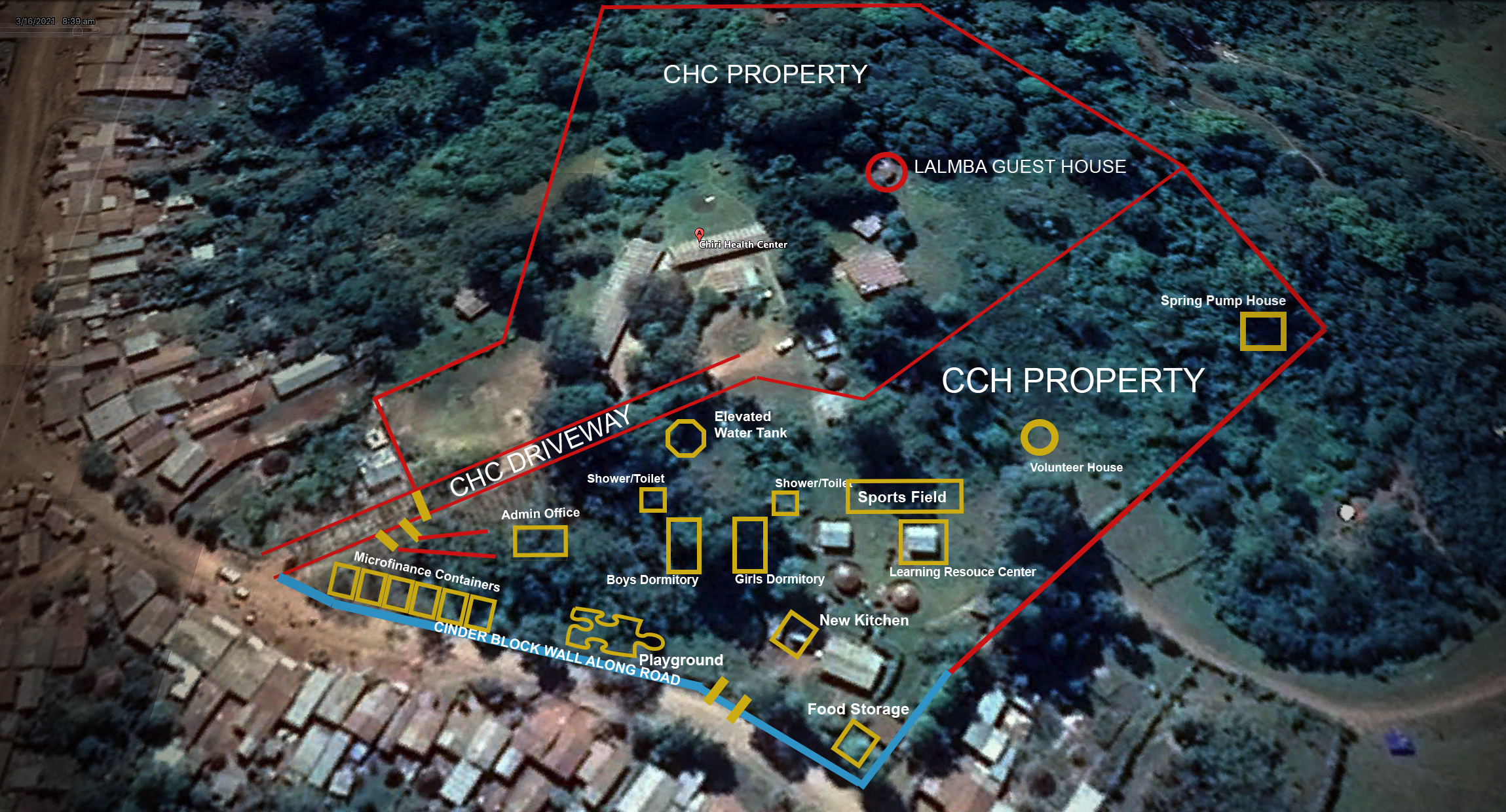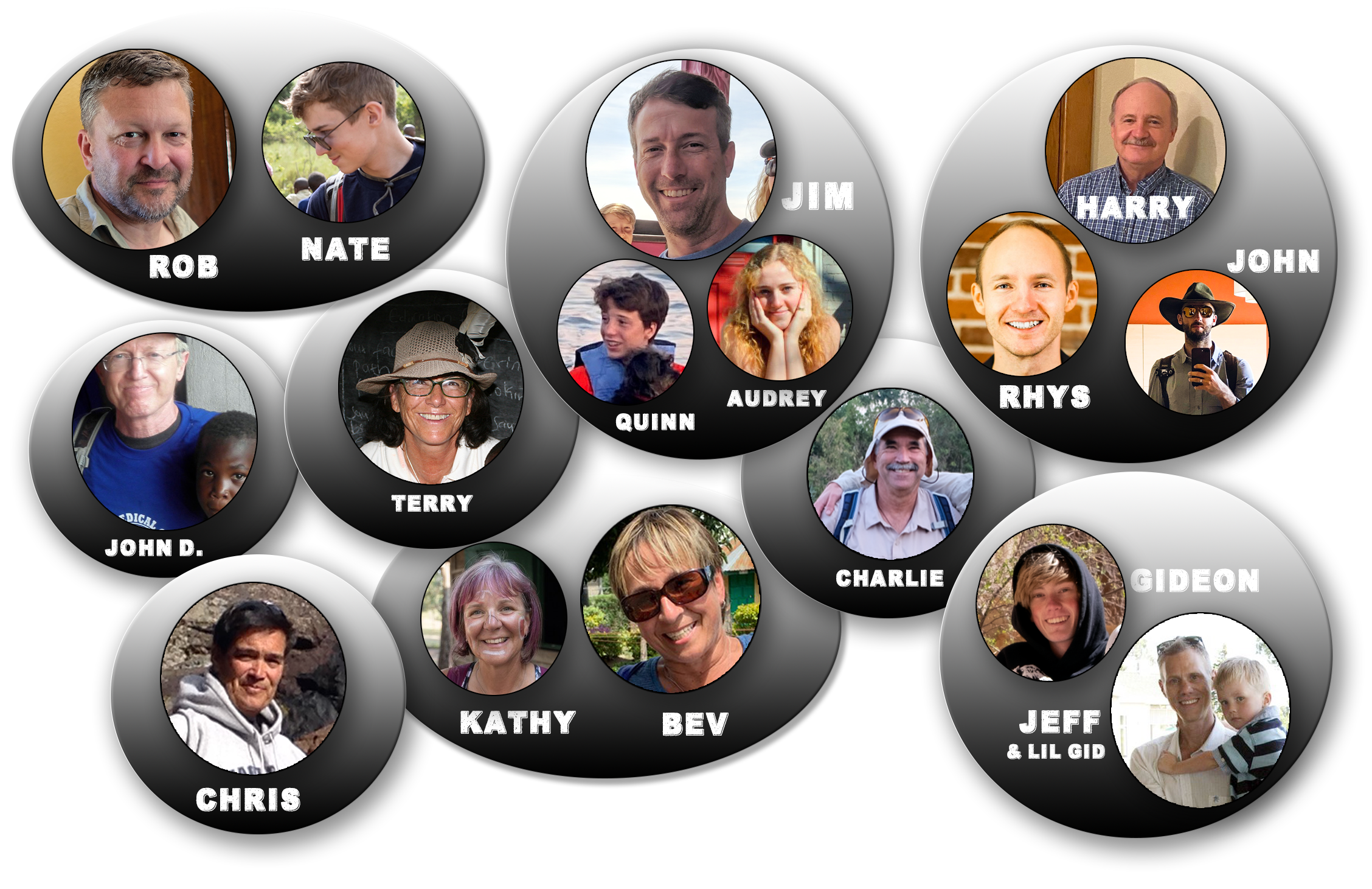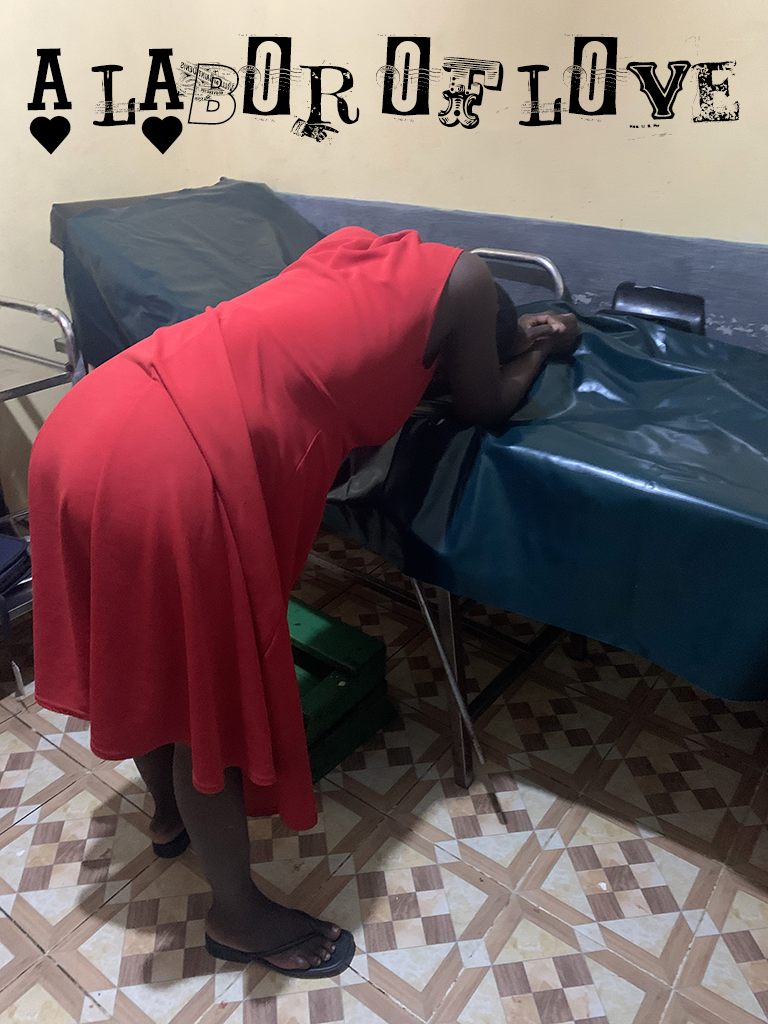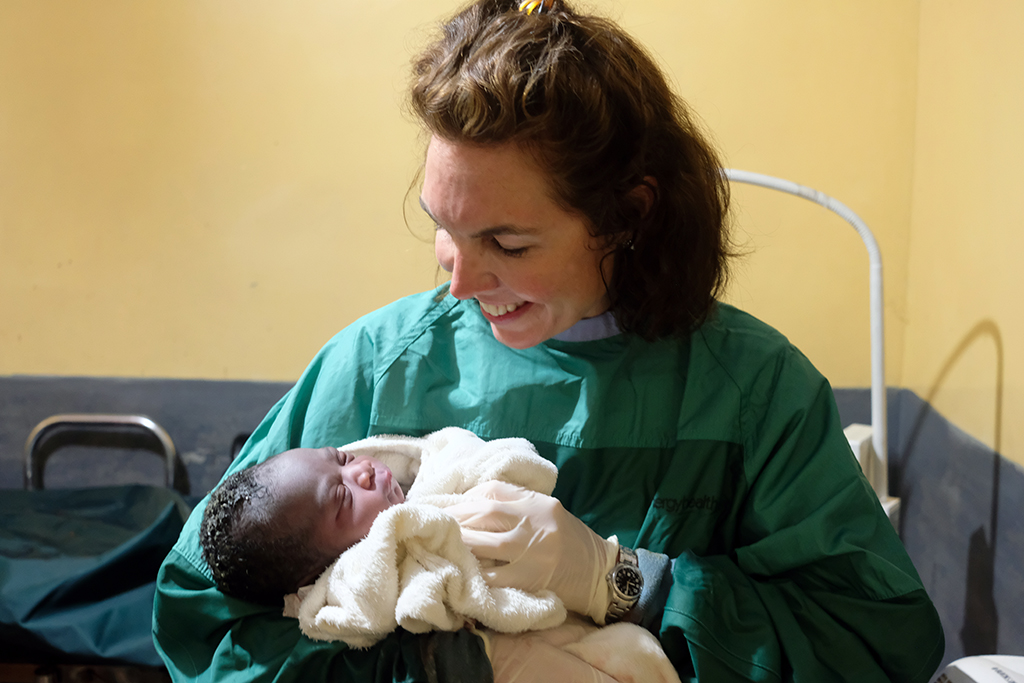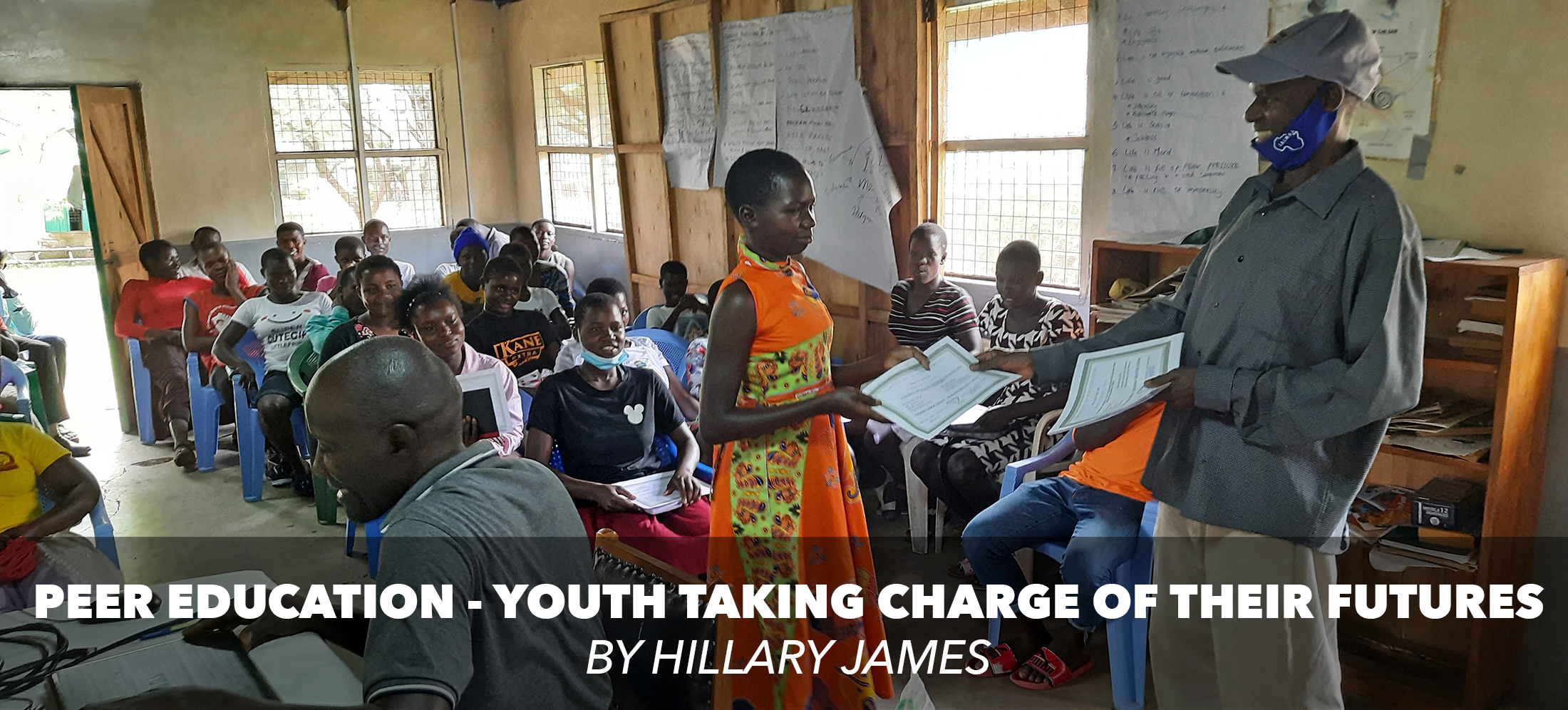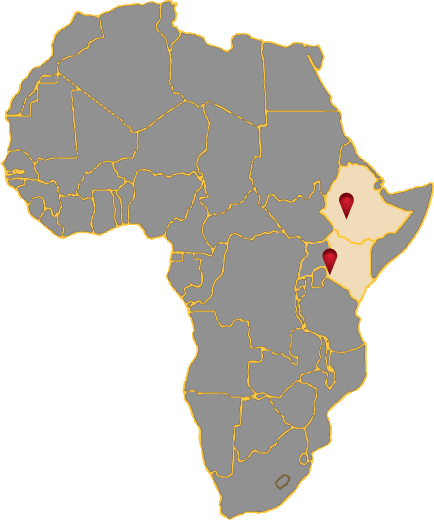by Jeff James
In the last edition of Lalmba News, we told you about all the wonderful improvements we’re planning this year for the Chiri Children’s Home. Those upgrades are well underway. The protective wall along the front of the compound is about 70% complete, the new kitchen is finished, and the existing buildings have been repainted with new windows and doors installed. A pair of generous brothers has donated towards the water system and the learning resource center. We are reviewing bids from contractors to begin those projects. Our 2021 Tembea Na Mimi team is dedicating all of its fundraising efforts towards raising the $160,000 we need to complete all the work (see diagram below).
So far, our intrepid walkers have raised $30,000 towards our goal, with each of them pledging to raise $10,000. It works out perfectly, as we have a group of 16 walkers this year! After a year of social distancing and working from home, I think people are more than ready to rip off those masks, stretch their legs, and show their beautiful smiles again. I know I am!
We are all meeting in Nairobi, Kenya on August 3, and after acclimating for a couple of days we will take our first steps across the Great Rift Valley on August 6th – 160 miles of fleet-footed (perhaps sore-footed is more like it) walking to Lalmba’s project on Lake Victoria. You know the deal. It’s a noble adventure for a needed cause, and we call it Tembea Na Mimi (Walk With Me).
Perhaps you’re interested in who’s walking with me this year. We have an assortment of TNM alumni, new walkers, fathers and children, Canadians, former Lalmba volunteers, and current board members. I would like to introduce you briefly to this group, and if you have a heart for the people, the cause, or the adventure, please offer some of these folks your sponsorship.
Like in the past, we have family groupings walking together this year. Harry Lindmark, a Lalmba board member (and former Lalmba volunteer in Sudan), is walking with his sons Rhys from San Francisco and John from Denver. From Charlottesville, Virginia, we have the Ragsdale family, Jim with his children Quinn and Audrey. Audrey is 17 and will be a senior, and Quinn is 15; both are athletes and scholars. They are also my niece and nephew, and I am beyond thrilled to share with them this experience, the people, and the places that have changed my life. Perhaps most excitingly for me, I will be walking with my son, Gideon, who spent his first year of life with Hillary and me in Ethiopia when we were Lalmba volunteers. He will turn 16 on this trip, a major milestone, and I want it to be a significant rite of passage for him. I’m looking for ideas on how to make it as impactful and memorable as possible, but Hillary has already told me scarification and fighting a lion are not permitted.
Dr. Charlie Evans (Former Lalmba volunteer from Kenya) who last time walked with his son Dan, and Rob Andzik (Lalmba’s board chairman) and son Nate will be joining us again this year.
Other Coloradans on this journey are Chris Atencio (Lalmba volunteer in Sudan) from Grand Lake. Chris is a retired schoolteacher and author of several marvelous books. One of them, Into Africa, is about his time serving as a Lalmba volunteer. Also from Denver, we have John Desmond, a retired urban planner and an experienced African explorer. From Westminster, Terry Robinette will be embarking on her third trek. Terry is on Lalmba’s board and is our treasurer. She is difficult to keep up with and brings so much faith and enthusiasm to every adventure. And last, but certainly not least, we have our friends from Canada, Bev Hooper and Kathy Moore. They have started the Lalmba Canada program which focuses primarily on providing high school scholarships for Lalmba’s orphans in Kenya.
We’re a big group, who plan to make a big impact for the children of Chiri with every step we take.
By Katherine Greene, certified nurse midwife
I have dreamed of visiting Africa since I was a college student. Life occurred and children and work responsibilities placed the dream on hold. As a nurse midwife, my passion is serving mothers and babies with maternity care. Learning of Lalmba’s mission from Hillary and Jeff, I was thrilled with the opportunity to visit their project in Kenya.
Matoso Clinic – Idah arrived at the clinic around 1 pm on Saturday. She had traveled approximately 45 minutes via motor bike (Imagine riding on the back of a motorbike while in labor!) from her village of Tagache. Idah’s closest government health facility had been closed for the prior 3 months due to employee strikes. There was a fivefold increase in deliveries at Matoso clinic during these months. How busy the staff were caring for all of the medical needs of people from the surrounding attachments!
As Idah’s labor continued, she wandered around outside leaning on trees and in the center of the compound. Wilkester, the clinical manager and experienced nurse midwife, comforted and reassured her. “Pole, pole,” Wilkester would say as she massaged Idah’s back, “sorry, sorry” in Swahili. Evening arrived and Idah returned to the hall of the maternity ward, which is an office building with the back end converted into a delivery room, two postpartum rooms and a bathroom. The front end of the building is shared with the offices of 3 lovely gentlemen who oversee data and IT. Idah was there on a weekend when the offices were vacant, allowing her more freedom to labor as women do, moaning and at times bare. When her time came, Idah stepped gently from the old wooden step stool on to the narrow delivery table covered with a large green plastic pad. With a stoic and graceful ferocity, she gave birth to a vigorous baby boy. Beautiful new life! We wrapped the babe in the blankets that Idah had brought with her. Wilkester hastily cleaned up after the delivery of the placenta with 4 small strips of gauze. Idah was supplied with a bar of soap and assisted to the bathroom for a highly coveted shower with running water. Wilkester sprayed down the bed and I mopped the floor. Wilkester rinsed the delivery supplies to be placed in the autoclave. I collected the small trash bag with the meager amount of waste supplies: 2 pairs of gloves and 4 strips of gauze and placenta. I marveled at how much more disposable material is used during a delivery back home! Also, it amazed me that the midwives here are responsible for all aspects of care, including cleaning up after deliveries. Idah was assisted to a postpartum bed and cuddled up with her sweet baby boy. Early in the morning, Idah headed home with her husband and baby boy on a hired motorbike.
I had the opportunity to tour a government facility in nearby Got Kochola, a 20-minute car ride from Matoso. For a patient to deliver here at night like Idah, an on-call nurse who lives in Matoso would be called in and would arrive via a lengthy motorbike ride. This presents a risky situation as a laboring woman is left outside in the dark awaiting care to arrive. And one must hope that all goes well, as the government facility lacks any emergency transport.
Sub-Saharan Africa, which accounts for 38 percent of global neonatal deaths, has the highest newborn death rate in the world. Kenya’s maternal mortality rate is 20 times that of the United States. Lalmba’s clinic serves the community of Matoso by providing 24-hour access to skilled nurse midwives and emergency transport to an operating room.
During my short stay, I was present for 7 deliveries. One was the delivery of a preterm infant to a 15 year-old mother. We were able to transfer the pair to a higher level of care in Migori, about 90 minutes away. I feel certain this was a lifesaving event for the infant.
Just a few weeks ago I learned very exciting news that Lalmba will now be able to accept government antenatal and delivery care reimbursement. It will be wonderful to watch maternity care services grow in Matoso!
Katherine Greene, a nurse midwife from Longmont, Colorado, volunteered as a mentor for our antenatal and delivery practices.
As a small organization, we enjoy the flexibility to modify our programs based on the changing needs of the communities we serve. We have been encouraged by the myriad ways that community health in Matoso, Kenya has improved in recent years, particularly with the availability of anti-retroviral medications for HIV and a promising new vaccine for malaria.
Concerning, however, is the stubbornly high rate of HIV transmission for the 15–24 year old age demographic in this area of Kenya around Lake Victoria. We also noted an increase in the teen pregnancy rate in the Matoso area during the COVID crisis when schools were not in session.
To that end, Lalmba contracted with a Kenyan consultant group that specializes in educational seminars. In April, the team facilitated a week-long seminar for 50 of Matoso’s most promising youth leaders. The facilitators were particularly impressed by the young man who walked 10 km on foot back and forth for the seminar each day and never missed a moment of the training. The high level of engagement reinforced to the team the area youth’s sincere interest in opportunities like this.
Throughout the week, the students participated in education sessions about HIV in their community (most were shocked at the high rate compared to the rest of the country), including role-playing about the most pressing issues they face, particularly in the areas of HIV, drug and substance abuse. The wise insight that came from these young people inspired many. One particular shining star compared the differences between the rich and poor in society. He said, “A poor man spends hours walking each day to find food for his family. A rich man spends hours walking to lose weight from all the food he has consumed that day.” Another wise youth said, “A rich man has a house with 10 rooms for 1 person to live in. A poor man has 1 room in which 10 people live.” In an attempt to understand their own place in the world, the students first processed the dichotomies that exist in society.
At the end of the week, Lalmba’s public health team identified those most promising candidates to form ongoing support groups and peer leader activities on campus. We envision a support group for pregnant teens, for example, and one for HIV+ youth, as well as further seminars to encourage healthy choices and focus on professional development. We plan to further develop our focus on Matoso’s youth, to improve their health and professional outcomes in an area that currently has so few options for their future.

